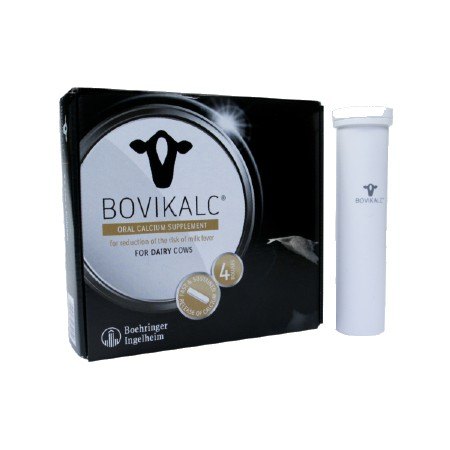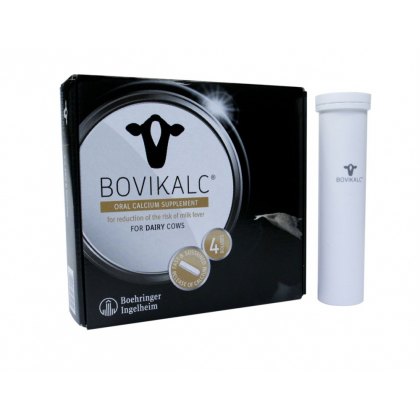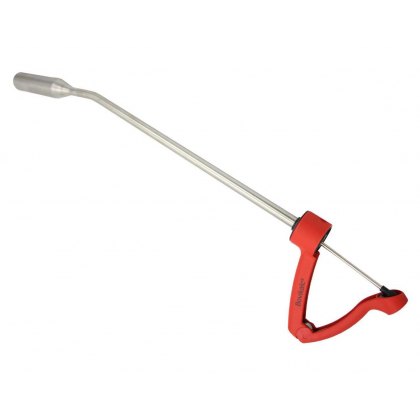Milk Fever and Bovikalc
Clinical milk fever is thought to affect between 4-9% of the UK’s dairy cows, while evidence suggests the subclinical form (hypocalcaemia) can affect up to 39%1,2. Despite it being the most important nutritional disorder affecting transition cows, many producers simply accept this level of milk fever3. This need not be the case however as milk fever is preventable.
Clinical cases of milk fever can be readily noticed and immediate intervention is required to correct blood calcium levels. Clinical cases also serve as an indicator that other cows in the herd could be suffering at a sub-clinical level.
Hypocalcaemia has numerous links to health and productivity post-calving. For example, milk fever increases the risk of dystocia by three times and increases the risk of mastitis in the following lactation by eight times1.
Calcium requirement
With the onset of lactation there is a sudden change to the balance between the lactational calcium demands placed on a cow and her ability to mobilise her own calcium reserves to meet this demand. Compared to the non-lactating cow, an extra 80g/day is required1.
The cow’s ability to adapt to meet this demand by drawing on calcium reserves influences whether or not milk fever occurs. Milk fever is often not seen in herds as a problem until a predisposing factor such as an increase in grass availability or changes to the forage quality suddenly and unexpectedly results in more cases than usual. Risk factors for milk fever include lack of dietary acidification and a body condition score greater than 3.54,5.
Clinical and subclinical milk fever can, to a large extent, be prevented through transition cow dietary management and nutrition. However invariably there are situations or cases where the risk of milk fever is increased. High yielding multiparous dairy cows and those with a previous history of milk fever are counted amongst this at risk group6,4.
For those groups or individuals at risk of milk fever, oral calcium can be supplied prior to the risk period. Bovikalc® is an oral calcium supplement bolus containing calcium chloride and calcium sulphate. Each bolus provides 42g of available calcium.
Calcium chloride is released rapidly to raise calcium levels quickly whilst the calcium sulphate provides a sustained supply of calcium over a prolonged period2. In addition, an acidifying effect of the Bovikalc boluses helps the cow to mobilise her own calcium reserves2.
Reducing the risk of milk fever
Bovikalc is best used starting immediately prior to calving and will help reduce the risk of milk fever. Bovikalc may also be used in clinical cases to reduce the risk of recurrence following prior treatment with injectable calcium.
Preventative strategies should be an integral part of herd health management on all farms. For a disorder that impacts so significantly on the health and production of the dairy cow, reducing the risk of milk fever is very important.
How to use Bovikalc to reduce the risk of milk fever in dairy cows:
Around the time of calving:
- Give the first bolus immediately prior to calving
- Give the second bolus immediately after calving
- Follow up with 2 further boluses at 12-15 hour intervals as necessary
Following treatment of a clinical case:
- Give the first bolus 2-3 hours after calcium injection
- Give the second bolus 12-15 hours later
Administer Bovikalc using the approved applicator.

Speak to your animal health advisor today about how Bovikalc can help you reduce the risk of milk fever in your herd.

Further information available from Boehringer Ingelheim Ltd, Animal Health, RG12 8YS, UK. UK Tel: 01344 746959 (sales) or 01344 746957 (technical), IE Tel: 01 291 3985 (all queries). Email: vetenquiries@boehringer-ingelheim.com. Bovikalc is a registered trademark of Boehringer Ingelheim Vetmedica GmbH, Ingelheim, Germany. ©2023 Boehringer Ingelheim Ltd. All rights reserved. Date of preparation: Oct 2023. AHD6747.
References
1. Husband (2005) In Practice 27, 88-92
2. Sampson et al (2009) Veterinary Therapeutics 10 (3) 131 - 139
3. Mulligan et al (2006) Irish Vet Journal. Vol 59 (12) p697-702
4. Houe et al (2001) Acta Vet Scanda 42, 1-29
5. Constable, P.D et al. WBC, Chile 2010. Monitoring DCAD diet in dairy cattle.
6. DeGaris et al (2009) The Veterinary Journal. 176, 58-69
- 1st November 2023


